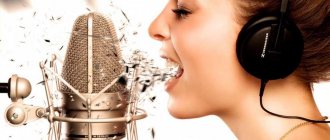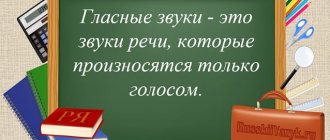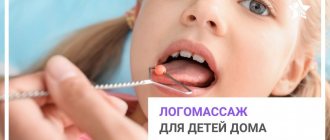Ronchopathy is being treated and this is already good. In addition, you can get rid of it in a very cheap way - with the help of tongue gymnastics. By choosing effective exercises, they will prevent its return after therapy. This technique is also suitable for preventive measures. A complex for the tongue is exactly what you need to do every day, then there will be a lasting effect.
So, with the help of physical education, you can significantly strengthen the muscles of the tongue, which your illness will not like. Of course, we are not talking about a complete treatment of apnea - what we offer is only part of a large therapeutic complex. Half an hour of exercise a day for a month, and you and your household will like the results.
Basic set of exercises for the tongue
- Pull your tongue down and forward to its maximum length. If you feel tension in the muscle fibers in the root area, then the movement is done correctly. Stay in this position for a couple of seconds. At the same time, you can pronounce drawn out, as if in a chant, “and-and-and.” At least 30 approaches. This will make the muscle fibers stronger.
- Using your tongue, press on the palate until you feel slightly tired.
- If you stretch your tongue far forward and move it vigorously to the sides, then over time the muscle corset will become toned, and snoring will disappear from the patient.
- Close your mouth tightly and inhale and exhale through your nose. At this time, tighten your tongue and point it towards your throat. The approximate number of approaches is 15. Regular exercise will definitely give a long lasting effect.
- Tilt your head up a little and try to touch the uvula with your tongue.
Signs of diction problems
When an adult has a diction disorder, it is immediately noticeable by the following signs:
- difficulties in pronouncing one or more sounds (replacement, distortion or absence);
- too fast a pace of speech, at which others do not understand the speaker;
- slow speech that is difficult for people to understand;
- unclear pronunciation of word endings;
- weak quiet voice or too loud;
- difficulties in using intonation.
When diction is impaired, speech becomes blurred, unclear, and inexpressive. It is difficult for others to perceive her. Therefore, sometimes they even have to ask again, which causes some discomfort in the speaker. Adults with such peculiarities of diction are embarrassed by their speech, and turn to a specialist for help or enroll in “Beautiful Speech” courses.
3 more exercises
- The “Pressing” exercise can strengthen the muscular corset of the tongue. You need to forcefully press it to the sky. Next, you should stay in this position for 10-15 seconds. Then, again with effort, pull your tongue towards the larynx. And again remain in the accepted position for 10 seconds. Next, press firmly with your tongue on the dental crowns of the upper row. Stay in this position for 10-12 seconds. There should be 3 approaches. Breathe through your nose and close your lips tightly.
- An equally productive exercise is “Show off your tongue.” We need to show it as much as possible. Try to reach it first to the edge of your nose, and then to your chin. There must be at least 20 approaches.
- The “Tongue Candle” exercise will also help. It is done very simply. You should open your mouth, just forcefully, to feel a slight stretch. Now try to reach the upper palate with your tongue. In this position, the hyoid part is quite tense. There are 10 approaches as usual. It is more productive to perform this task with your head tilted up.
What it is
Diction is one of the characteristics of speech, meaning the correct and clear pronunciation of all sounds. A person must clearly pronounce all sounds even in the most difficult words. In addition, for good diction you need to have an expressive voice so that others can clearly hear the speaker.
An important component of correct diction is the ability to use intonation. Such people are pleasant to listen to, they are good storytellers because they can convey the mood of the characters. The pace of speech should be such that others can understand what the person is talking about.
Features of speech therapy diagnostics
The specialist always examines all components of speech development. To assess the state of diction, he pays attention to the following components:
- strength and pitch of voice;
- mastery of intonation;
- rate of speech;
- sound pronunciation;
- articulatory motor skills;
- strength and duration of exhalation.
The speech therapist first looks at the anatomical features of the articulation organs, because this may be one of the causes of diction disorders. Also offers to complete tasks on statics and dynamics.
Next, he examines the sound pronunciation of all phonemes. You need to pronounce them in isolation, in syllables and words. The diagnosis also includes an examination of the syllable structure, during which the speech therapist evaluates how clearly a person pronounces the sounds in a word (even with a combination of consonants).
To assess the tempo-rhythmic side, tasks for reading phrases with different intonation and pitch of the voice are used. A person pronounces tongue twisters and tongue twisters, which help evaluate the clarity of words. The speech therapist also evaluates the pace of a person’s normal speech.
Also during diagnosis, the specialist checks the formation of speech breathing, the strength and duration of exhalation. To do this, he asks to “sing” the vowels as long as possible and play wind instruments.
The specialist must talk with the person to find out about his speech history in childhood, to more accurately determine the causes of diction disorders and possible speech disorders. Based on the diagnostic results, the speech therapist selects the necessary exercises.
Recommendations for correcting diction
To practice clear pronunciation, tongue twisters are used. You need to start working with them at a slow pace, gradually speeding it up. All sounds must be pronounced clearly, and others must understand what the person is talking about, even at a fast pace of speech. Therefore, it is best to invite someone to classes who could evaluate the progress. For greater psychological comfort, this could be one of your relatives or friends.
To make speech expressive, adults can help by reading their favorite poems. When reading them, you need to focus your voice on the most important words. Using their example, a person will learn to use intonation to convey the meaning of the work to others.
Adults can benefit from practicing their public speaking skills. This could be performances in a theater group or making toasts. If diction disorders are combined with psychological problems, then you should practice while listening to relaxing music or go swimming. And speak publicly in front of a small number of people.
You must complete all tasks in front of a mirror. An adult must not only speak expressively, but also use nonverbal means - facial expressions and gestures. Then the speech will not only be understandable and beautiful, but also effective.
Types and causes of diction disorders
They are separated into a separate block of classification of speech disorders:
- Voice formation disorders: aphonia (a person speaks only in a whisper), dysphonia (voice production disorders and control of its pitch).
- Violations of the tempo-rhythmic side (tachylalia - too fast speech rate, bradylalia - slow speech).
- Stuttering - a person has developed the means to formulate a statement, but due to convulsions in the speech apparatus, hesitations occur in speech.
Additionally, unclear, slurred speech may be a sign of more complex speech disorders:
- dysarthria;
- aphasia.
If an adult only has problems with diction, a speech therapist will select exercises to correct it. But if this is part of the symptomatology of more complex speech disorders, the teacher prepares corrective work to overcome this speech defect, and not only focuses on correcting diction.
The etiology of unclear speech varies. It can be caused by both biological factors and social and psychological reasons.
Biological:
- anatomical features of the speech apparatus;
- disturbances in articulatory motor skills;
- head injuries;
- organic damage to the central nervous system;
- underdevelopment of the speech centers of the cerebral cortex.
Social:
- a person’s surroundings include people with incorrect diction;
- incorrect speech environment.
Psychological factors include a person’s lack of self-confidence and fear of public speaking. It happens that when communicating with loved ones there are no difficulties, but when speaking to a wide audience, the speaker experiences anxiety, which causes a violation of diction. Or hesitations in speech can occur in closed, uncommunicative people. Therefore, a speech therapist must conduct a diagnosis to determine the exact cause of the disorder and select appropriate corrective exercises.
What is the decision?
We develop diction
Problems with diction can be eliminated if fathers and teachers of the cobalt school play different games on the importance of the articulatory apparatus. I would like to thank you for the first time to differentiate sounds, develop mental visuals, play games for orientation in space, and use neurocorrection.
The greatest creative achievement that can be experienced in any world is painting with two hands
. The positive effect of such rights is noticeable in the child’s success, productivity and improved self-esteem.
Faculty members successfully promote the practice of synchronous painting for the prevention of dyslexia and dysgraphia. Simultaneous movements of both hands activate the offended ligaments and new neural connections are created. As a result, the student’s activity and productivity are moving forward.
“We have the right to start something like this with the simplest elements - just like that. Zgod Varto arrange images, tiny clouds, little buildings, trees. This practice can be taken from children to the sand. Try mirror pictures, if the child is exposed to upside-down babies, which she can paint in the correct position, -
recommends expert Inna Filip'eva
. — These games arouse keen interest among schoolchildren. The stench does not deprive the work of higher mental functions, but also relieves the anxiety that is often associated with successful endeavors.”
Even more brown solutions!
How to improve diction
For enhanced diction, pressure cookers
. With regular training, the jammer is effectively eliminated from defects, which significantly reduces the quality of diction.
Recommendations from the vikoristan of pressure cookers:
- At the first stage, it is necessary to use no more than three pressure cookers in order to train the vim’s singing sound.
- The text is written thoroughly and as clearly as possible.
- It’s best to study in front of a mirror.
- It is necessary to speak emotionally and vocally.
Such regular and simple exercises, which can be done at home or during the lesson, will help the child improve diction and develop the correct vocabulary.
Author: Anastasia Pasichna, journalist for the project
“ Let’s start at once: friendly school ”
This material was created for financial support of the European Union and the Ministry of Foreign Affairs of Finland. This position is exclusively representative of the partner and does not necessarily reflect the position of the European Union and the Ministry of Foreign Affairs of Finland.
↓Read also
In Ukraine, 29% of teenagers were victims of online bullying, research
Checking clothes and keeping busy with girls: how the children's football club "Sparta" does it
What's the problem?
According to speech therapy, children with mental problems feel uncomfortable around their peers, get confused, and withdraw into themselves. At the same time, they may have a decrease in phonemic hearing, a loss of vision, poorly developed articulatory and vocal motor skills. All of these can be the cause of impaired reading - dyslexia and dysgraphia.
The correct vimova of words and sounds flows onto the celestial branch of the child, and absorbs the swedish formation of rosemary operations. Well-spoken, clear and literate language is an element of a child’s success and a sign of authority in the eyes of other children.
Home speech therapy: 30 rights for developing a child’s speech
For the correct production of sounds, the functioning of all organs of articulation is necessary. There’s no way you can do this without training!
If your child is already 5 years old, and until now she can’t clearly detect any sounds, the smell is stifling or smearing, you have to go to a speech therapist for lessons (to put on the sounds). You can take care of your baby at home on your own with “mud porridge” in 3-4 minutes. Then, perhaps, you won’t need a speech therapist. And after 6 years of correcting Vimova, it will already be much more complex.
For lessons at home, you will need a mirror, a gaming mood and something to do with your kids. Carry out training 1-2 times a day. The cost of one job is five to twenty hours. At first, take it to the right. Itching or skin for three days is like new. Repeat what you have mastered in the next few days to the right.
TSIKAVA STATICS
Stop with static rights. Their articulatory posture decreases under the scale from 3 to 20. The hour of decrease increases step by step. Static people have the right to help tighten the muscles of the articulatory apparatus, as well as formulate the correct patterns of sounds.
- "At the end." Open your mouth wide and then straighten your position.
- "Frame". The lips are stretched into a smile, the teeth are tightly clenched.
- "Proboscis". The teeth are tightly clenched, the lips are pulled forward, the baby elephant’s proboscis is mute.
- "Mlinec". Place a wide, spread tongue calmly on the lower lip, keeping your mouth open.
- "Trap". With a wide tongue, bite the side edges with the molars, the tip of the tongue drops behind the lower incisors.
- “Aggravate the kochin.” The tip of the tongue presses into the lower incisors, the wide back of the tongue is sharply curved, the mouth is open, the lips are stretched to the sides.
- "Sting". Open your mouth, stick out your sharp tongue from your mouth (as far as possible).
- "Cup". Open your mouth wide, raise your tongue in the shape of a curved cup to the upper lip (the lower lip does not help you with this!).
- "Fungus". The mouth is open, the wide tongue is gently touched with the upper surface of the palate, the lingual frenulum is stretched - like a mushroom on a long knife.
- "Tube". The tongue is closed (similar to an empty pipe), the lips are rounded around the tongue, and they help to maintain an important posture.
All these are the basic rights of the articulation school.
DYNAMIC AND EXCITING
Combining two static elements into a single link, a distinctly dynamic composition.
- “Frame” - “Proboscis”. Clench your teeth tightly. Under the “one-two” sound, your lips either stretch out in a smile, or stretch forward. Make sure that the teeth do not become loose when pulled together, and the facial expressions are natural (the baby is not to blame for his eyes).
- "Mlinets" - "Tube". This link is two to the right, one of the most complex. If you don’t go into detail about this, take on more light cascades: “Mlynets” - “Sting”, “Mlynets” - “Calyx”, “Mlynets” - “Mushroom”. If the baby is able to talk through them without thinking, turn around to the important link.
All cascades are connected to the “one-two” frame. Spread completely, with clear fixation of the skin position. From busyness to busyness, the fluidity with which the child moves to the right increases.
Has your child already mastered these rules and is learning them with ease? Now is the time to move on to another, more complex part of speech therapy!
TONGUE-WORKER
And you have the right to allow the energetic work of the tongue to work in tandem with the lower tongue and lips.
- "Goydalki." The narrow tongue alternately stretches to the nose, then to the chin. The lower jaw is lowered, its position is fixed, the mouth is wide open. "Painter". Open your mouth wide. A long, narrow tongue, a dumb painter’s brush, diligently “farms” the bottom up and down. The lower crack is non-rukhoma.
- "Snake". The narrow tongue hangs out of the mouth as much as possible. You can work the swedish hands from side to side (like working with a snake’s tongue). The mouth is open, the lower gap is non-rukh. Lips stretched to the sides.
- "Indik". A wide tongue hangs out of the mouth and across the upper lip, apparently accompanied by the sounds of an angry indian: “bl-bl-bl.” The lower crack is lowered, it does not collapse to the rhythm of the robotic tongue!
EVERYONE EXERCISE!
The lips and lower jaw need no less articulation. Let's help them work more dynamically!
- "Ribka". Clench your teeth tightly, pull your lips forward (div. to the right “Proboscis”). The lips open and then close (like the mouth of a fish in an aquarium).
- "Funnel". Stick out your lower jaw, open your mouth, open your teeth. On the “one” side, the lips are pulled forward; on the “two” side, the lips are pulled in the middle of the mouth, tucked behind the teeth. Do at least 10 repetitions.
- "Images". Bite your upper lip with your lower front teeth at least 10-15 times. The lower gap hangs forward as much as possible.
- "Timpani". The lips are lightly tanned by the teeth in the middle of the mouth. Splash them one to the other, you will see a characteristic splashing sound. Repeat at least 10 times.
- “Konyachka, like a firka.” Relax your lips, soften, inherit the ends. Repeat at least 10 times.
- "Putting it in." The lower crack is hanging forward. Push it from side to side at least 10-15 times with maximum amplitude.
- "Khovanki". There are three options here.
- grab the upper lip and bite it with your lower front teeth. Only the lower lip is visible, it stretches up to the nose. Do such a stunt for at least 5 seconds.
- grab the lower lip and bite it with your upper front teeth. Only the upper lip is visible, and it stretches down to the chin. Do such a stunt for at least 5 seconds.
- grab the upper and lower lips, pulling them into your mouth and lightly squeezing your front teeth. Do such a stunt for at least 5 seconds.
- "Plane". Scratch the lower central teeth along the upper lip at least 10-15 times. The lower slit hangs forward and works energetically. Then repeat the same with the lower lip, otherwise you will need to “shade” your upper teeth.
SHOW VISTUPI
Once, after two or three months of training, the child has successfully mastered school and a complete program, it’s time to move on to staging show numbers. All mini-performances involve the articulatory organs and, especially, the child itself. Who's the big hero here? Gnome Tongue!
- "Mlintsi". Gnome Yazichok bought dishes from the Gospodar's store. Now you have to start preparing yourself. It is best for the tongue to bake the pastry in a new frying pan. The color and roundness will come out soon. The skin of them is anointed with oil (a wide tongue spreads on the lower lip, causing the offended lips to splash the line: “five-five-five”). Mlintsi Tongue is eaten with jam.
- “Delicious!”: Open your mouth and use your wide tongue to lick the animal’s upper lip downwards at least 5 times. Be careful not to let your lower lip push against your tongue. Mlintsi Tongue washes it down with tea. If the tea is too hot, the tongue is on the new side (the position of the articulatory organs is like the “Cup” on the right, blow on the edge of the tongue, without puffing out the cheeks.)
- "In the forest for mushrooms." Gnome Tongue really loves to pick mushrooms. Take the big basket (on the right is “Cup”) and go to the forest. Depending on the road, you have to climb over the ladder. To the right is the “Strumochok”: the lips are laughing, the teeth are clenched, the tip of the tongue presses into the base of the lower front incisors. Dovgostrokovo vimoviti sound “z”. A stream of water flows down the tongue, in the middle of the lower lip and along the chin. The water in the pot is cold. The child places her little bottom under the basket and checks that the water in the straw is still cold. When this happens, don’t forget to keep in mind the sound “z” for a long time! So as not to get your feet wet, the tongue is brushed with mist.
- “Mistok” : the tongue twists sharply, pressing its tip into the base of the lower front incisors. Open the yakmog's mouth wider. There are so many mushrooms in the forest! The axis under the yalinka is a small boletus (on the right is “Mushroom”), and the handle is a chanterelle. Right there is a siroizhka, a rizhik (the child, at short intervals, taps “Mushroom” several times to the right). Having arrived home, the gnome Tongue prepares a very tasty herb from the collected mushrooms (right “Delicious!”).
There are so many mushrooms in the forest! The axis under the yalinka is a small boletus (on the right is “Mushroom”), and the handle is a chanterelle. Right there is a siroizhka, a rizhik (the child, at short intervals, taps “Mushroom” several times to the right). Having arrived home, the gnome Tongue prepares a very tasty herb from the collected mushrooms (right “Delicious!”).
Vikoristuyu re-arranged to the right, you can easily put together sufficient and effective programs for the articulatory organs of your baby. It’s not good to forget that the main judge of all these stains and protrusions is the mirror. Only with this help can you evaluate the purity of the skin element! The mirror will help you rotate and articulate important sounds. And soon your language will be pure and correct!
For materials from Soma.
Add "Ukraine Language" to your Google account.










